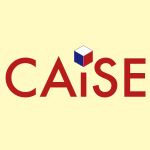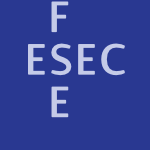25 papers:
 CAiSE-2015-HarmanBJRK #elicitation #memory management #process
CAiSE-2015-HarmanBJRK #elicitation #memory management #process- Virtual Business Role-Play: Leveraging Familiar Environments to Prime Stakeholder Memory During Process Elicitation (JH, RB, DJ, SRM, UK), pp. 166–180.
 SIGIR-2015-KraviAGKMP #comprehension #web
SIGIR-2015-KraviAGKMP #comprehension #web- Searcher in a Strange Land: Understanding Web Search from Familiar and Unfamiliar Locations (EK, EA, IG, YK, AM, DP), pp. 855–858.
 ESEC-FSE-2015-Vinayakarao #comprehension
ESEC-FSE-2015-Vinayakarao #comprehension- Spotting familiar code snippet structures for program comprehension (VV), pp. 1054–1056.
 CHI-2014-HarrisonXSH #interactive #named #physics #tool support
CHI-2014-HarrisonXSH #interactive #named #physics #tool support- TouchTools: leveraging familiarity and skill with physical tools to augment touch interaction (CH, RX, JS, SEH), pp. 2913–2916.
 SIGMOD-2013-ZhangGBFRP #named #statistics #using
SIGMOD-2013-ZhangGBFRP #named #statistics #using- GeoDeepDive: statistical inference using familiar data-processing languages (CZ, VG, JB, TF, CR, SP), pp. 993–996.
 HIMI-D-2013-McCoyLMR #quality
HIMI-D-2013-McCoyLMR #quality- The Effects of Website Familiarity on Website Quality and Intention to Use (SM, ETL, GM, CFR), pp. 213–220.
 SAC-PL-J-2011-AcherCLF13 #domain-specific language #feature model #modelling #named #scalability
SAC-PL-J-2011-AcherCLF13 #domain-specific language #feature model #modelling #named #scalability- FAMILIAR: A domain-specific language for large scale management of feature models (MA, PC, PL, RBF), pp. 657–681.
 CHI-2012-DunlopL #multi #optimisation
CHI-2012-DunlopL #multi #optimisation- Multidimensional pareto optimization of touchscreen keyboards for speed, familiarity and improved spell checking (MDD, JL), pp. 2669–2678.
 CHI-2012-SeitlingerL #re-engineering #semantics #social
CHI-2012-SeitlingerL #re-engineering #semantics #social- Implicit imitation in social tagging: familiarity and semantic reconstruction (PS, TL), pp. 1631–1640.
 CHI-2011-SuzukiBYJNAF #mobile #modelling
CHI-2011-SuzukiBYJNAF #mobile #modelling- Variation in importance of time-on-task with familiarity with mobile phone models (SS, VB, NY, BEJ, YN, TA, SF), pp. 2551–2554.
 SIGIR-2011-KarimiSCK #behaviour #topic
SIGIR-2011-KarimiSCK #behaviour #topic- Domain expert topic familiarity and search behavior (SK, FS, AC, SK), pp. 1135–1136.
 ICSE-2010-FritzOMM #source code
ICSE-2010-FritzOMM #source code- A degree-of-knowledge model to capture source code familiarity (TF, JO, GCM, ERMH), pp. 385–394.
 ITiCSE-2009-FesakisS #education #programming
ITiCSE-2009-FesakisS #education #programming- Influence of the familiarization with “scratch” on future teachers’ opinions and attitudes about programming and ICT in education (GF, KS), pp. 258–262.
 CHI-2007-LampeES #network #online #social
CHI-2007-LampeES #network #online #social- A familiar face(book): profile elements as signals in an online social network (CL, NBE, CS), pp. 435–444.
 HCI-AS-2007-LowryRH #trust
HCI-AS-2007-LowryRH #trust- First Impressions with Websites: The Effect of the Familiarity and Credibility of Corporate Logos on Perceived Consumer Swift Trust of Websites (PBL, TLR, TH), pp. 77–85.
 CSCW-2006-LiL #approach #editing #lightweight
CSCW-2006-LiL #approach #editing #lightweight- A lightweight approach to transparent sharing of familiar single-user editors (DL, JL), pp. 139–148.
 ECIR-2006-WenRB #behaviour #online #topic
ECIR-2006-WenRB #behaviour #online #topic- The Effects on Topic Familiarity on Online Search Behaviour and Use of Relevance Criteria (LW, IR, PB), pp. 456–459.
 ICPR-v3-2006-WangB06a #challenge #image #string #trade-off
ICPR-v3-2006-WangB06a #challenge #image #string #trade-off- CAPTCHA Challenge Tradeoffs: Familiarity of Strings versus Degradation of Images (SYW, JLB), pp. 164–167.
 CIKM-2005-KumaranJM #topic #web
CIKM-2005-KumaranJM #topic #web- Biasing web search results for topic familiarity (GK, RJ, OM), pp. 271–272.
 CHI-2004-PaulosG #game studies
CHI-2004-PaulosG #game studies- The familiar stranger: anxiety, comfort, and play in public places (EP, EG), pp. 223–230.
 ITiCSE-2001-Fone #concept #network #spreadsheet #using
ITiCSE-2001-Fone #concept #network #spreadsheet #using- Using a familiar package to demonstrate a difficult concept: using an excel spreadsheet model to explain the concepts of neural networks to undergraduates (WF), pp. 165–168.
 ICPR-v4-2000-SeinstraK #api #image #parallel
ICPR-v4-2000-SeinstraK #api #image #parallel- Transparent Parallel Image Processing by way of a Familiar Sequential API (FJS, DK), pp. 4824–4827.
 HCI-CCAD-1999-BookG #interface
HCI-CCAD-1999-BookG #interface- Mental effort increases when adding a voice control feature to a familiar interface (RB, MG), pp. 23–27.
 CHI-1998-MackayFFM #artificial reality #design
CHI-1998-MackayFFM #artificial reality #design- Reinventing the Familiar: Exploring an Augmented Reality Design Space for Air Traffic Control (WEM, ALF, LF, LM), pp. 558–565.
 STOC-1980-Tompa80a #algorithm #implementation #polynomial #sublinear #transitive
STOC-1980-Tompa80a #algorithm #implementation #polynomial #sublinear #transitive- Two Familiar Transitive Closure Algorithms which Admit No Polynomial Time, Sublinear Space Implementations (MT), pp. 333–338.
 CAiSE-2015-HarmanBJRK #elicitation #memory management #process
CAiSE-2015-HarmanBJRK #elicitation #memory management #process SIGIR-2015-KraviAGKMP #comprehension #web
SIGIR-2015-KraviAGKMP #comprehension #web ESEC-FSE-2015-Vinayakarao #comprehension
ESEC-FSE-2015-Vinayakarao #comprehension CHI-2014-HarrisonXSH #interactive #named #physics #tool support
CHI-2014-HarrisonXSH #interactive #named #physics #tool support SIGMOD-2013-ZhangGBFRP #named #statistics #using
SIGMOD-2013-ZhangGBFRP #named #statistics #using HIMI-D-2013-McCoyLMR #quality
HIMI-D-2013-McCoyLMR #quality SAC-PL-J-2011-AcherCLF13 #domain-specific language #feature model #modelling #named #scalability
SAC-PL-J-2011-AcherCLF13 #domain-specific language #feature model #modelling #named #scalability CHI-2012-DunlopL #multi #optimisation
CHI-2012-DunlopL #multi #optimisation CHI-2012-SeitlingerL #re-engineering #semantics #social
CHI-2012-SeitlingerL #re-engineering #semantics #social CHI-2011-SuzukiBYJNAF #mobile #modelling
CHI-2011-SuzukiBYJNAF #mobile #modelling SIGIR-2011-KarimiSCK #behaviour #topic
SIGIR-2011-KarimiSCK #behaviour #topic ICSE-2010-FritzOMM #source code
ICSE-2010-FritzOMM #source code ITiCSE-2009-FesakisS #education #programming
ITiCSE-2009-FesakisS #education #programming CHI-2007-LampeES #network #online #social
CHI-2007-LampeES #network #online #social HCI-AS-2007-LowryRH #trust
HCI-AS-2007-LowryRH #trust CSCW-2006-LiL #approach #editing #lightweight
CSCW-2006-LiL #approach #editing #lightweight ECIR-2006-WenRB #behaviour #online #topic
ECIR-2006-WenRB #behaviour #online #topic ICPR-v3-2006-WangB06a #challenge #image #string #trade-off
ICPR-v3-2006-WangB06a #challenge #image #string #trade-off CIKM-2005-KumaranJM #topic #web
CIKM-2005-KumaranJM #topic #web CHI-2004-PaulosG #game studies
CHI-2004-PaulosG #game studies ITiCSE-2001-Fone #concept #network #spreadsheet #using
ITiCSE-2001-Fone #concept #network #spreadsheet #using ICPR-v4-2000-SeinstraK #api #image #parallel
ICPR-v4-2000-SeinstraK #api #image #parallel HCI-CCAD-1999-BookG #interface
HCI-CCAD-1999-BookG #interface CHI-1998-MackayFFM #artificial reality #design
CHI-1998-MackayFFM #artificial reality #design STOC-1980-Tompa80a #algorithm #implementation #polynomial #sublinear #transitive
STOC-1980-Tompa80a #algorithm #implementation #polynomial #sublinear #transitive









